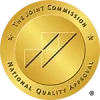What is an alcoholic nose? In old comics and films (such as ones starring W.C. Fields), people who were under the influence of alcohol were often portrayed as having a flushed face and a bulbous red nose. Does this exaggerated appearance have any basis in reality?
What Is an Alcoholic Nose?
Lists of the physical effects of long-term alcohol abuse often focus on the damage that this drug can cause to a person’s heart, lungs, liver, and kidneys, as well as the connection between alcohol abuse and certain types of cancer.
But alcohol abuse can also affect a person’s appearance. And while these types of concerns may not seem as serious as organ damage or cancer, they are no laughing matter.
Before we get too far into this post, let’s address the question that’s posed in the headline: What is an alcoholic nose?
Most people who have what is commonly referred to as an alcoholic nose, whiskey nose, or drinker’s nose are probably suffering from the following conditions:
- Rosacea – This condition is characterized by flushed skin and visible blood vessels, typically on the cheeks and nose.
- Rhinophyma – This disorder involves the reddening of the skin on the nose, along with pustules and swelling.
To underscore the connection between these two conditions, experts consider rhinophyma to be a part of late-stage rosacea – though it can occur in people who had not previously exhibited obvious symptoms of rosacea.
Having answered the question, “What is an alcoholic nose” with these two medical terms, we’ll move on in the next section by answering another common query: What causes an alcoholic nose? (Spoiler alert: Alcohol may not be to blame after all.)
What Causes an Alcoholic Nose?
In the previous section, we noted that alcoholic nose is an informal term for what usually turns out to be rosacea or rhinophyma.
One of the most obvious effects of using these medical terms is that we’re no longer saying “alcoholic” when we describe this condition. Is that merely a superficial change, or does it indicate that drinking may not actually be to blame?
According to several experts, neither rhinophyma nor rosacea are caused by alcohol use, alcohol abuse, or alcohol addiction. In other words, a person’s drinking habits appear to have no significant bearing on their risk for developing an alcoholic nose.
If an alcoholic nose isn’t the result of alcohol abuse, then what is the true cause?
According to the medical experts at UT Southwestern Medical Center, the following five factors can increase a person’s risk for developing an alcoholic nose:
- Age: Most people who are diagnosed with this condition are in the 50-70 age range.
- Gender: Rosacea is more common in women, but rhinophyma is more likely to affect men.
- Complexion: Alcoholic nose occurs more frequently among people with a lighter skin tone.
- Ethnicity: This condition typically affects people of Eastern European descent as well as those whose ancestors were born in Ireland, England, Scotland, and Scandinavia.
- Family history: If you have a parent, sibling, or other family member with either rhinophyma or rosacea, you may be more likely to experience one of these conditions yourself.
Although alcohol has not been identified as either a direct cause or a primary risk factor, that doesn’t mean there is no association between drinking and developing alcoholic nose. For example:
- Alcohol abuse can cause a person’s face to become puffier, which can magnify the effects of rhinophyma.
- Heavy drinking can also have a dehydrating effect on a person’s skin, which can draw added attention to the rhinophyma.
- Some research efforts have linked excessive alcohol intake with more severe symptoms of rosacea.
So, while alcohol use does not appear to cause what many people refer to as an alcoholic nose, it can exacerbate the symptoms and call greater attention to the effects of this condition.
Can an Alcoholic Nose Be Treated?
An alcoholic nose can be a source of considerable embarrassment and distress. This emotional pain can be magnified due to the persistent (but incorrect) belief that this is a physical symptom of addiction. Thankfully, treatment can rectify the damage that rhinophyma causes.
For the earlier stages of the condition, treatment may involve the use of topical or oral antibiotics. For those who have more advanced cases, surgery may be necessary. The good news is that several surgical approaches have proved to be effective.
Begin Treatment for Alcohol Addiction in Nashville
While alcohol addiction may not be an underlying cause of rhinophyma, it has been definitively linked with myriad other types of physical and psychological damage. The best way to minimize your risk for continued harm is to get professional help. With the assistance of the trained professionals at Nashville Treatment Solutions, you can end your alcohol abuse, regain control of your thoughts and behaviors, and build a foundation for a much healthier future.
Treatment options at our center include detox, a partial hospitalization program (PHP), an intensive outpatient program (IOP), and traditional outpatient alcohol rehab in Nashville. In each of these programs, you can expect to receive customized services and compassionate support from a team of dedicated caregivers.
For more information or to schedule a free alcohol addiction assessment please either visit our Admissions page or call us directly. We look forward to answering all your questions and helping you decide if Nashville Treatment Solutions is the ideal place to begin your recovery journey.








